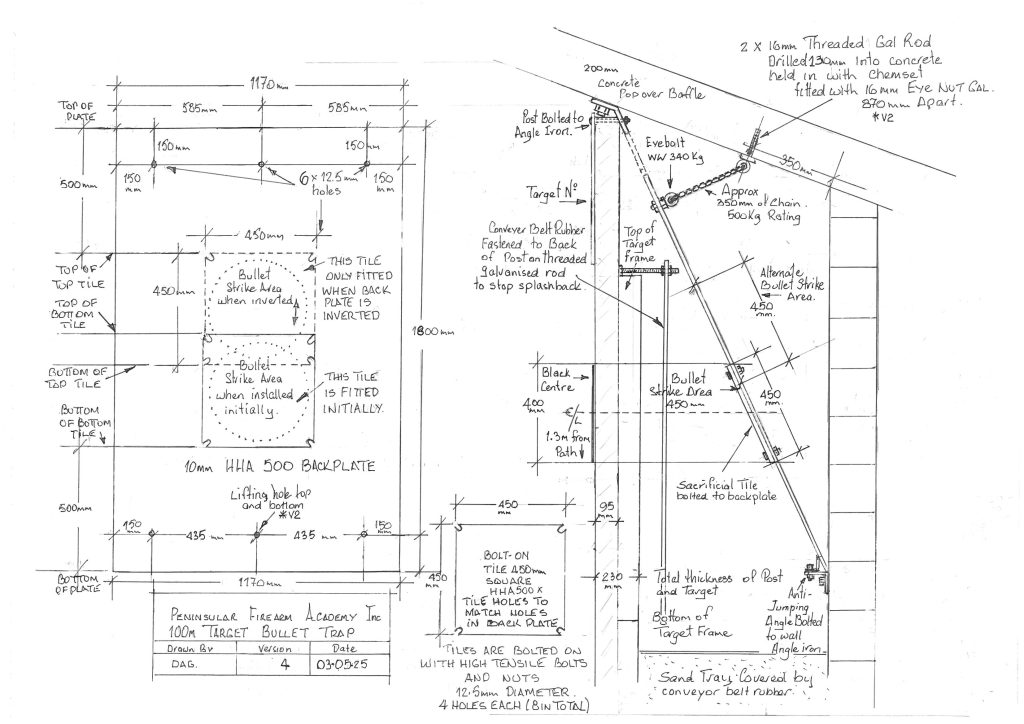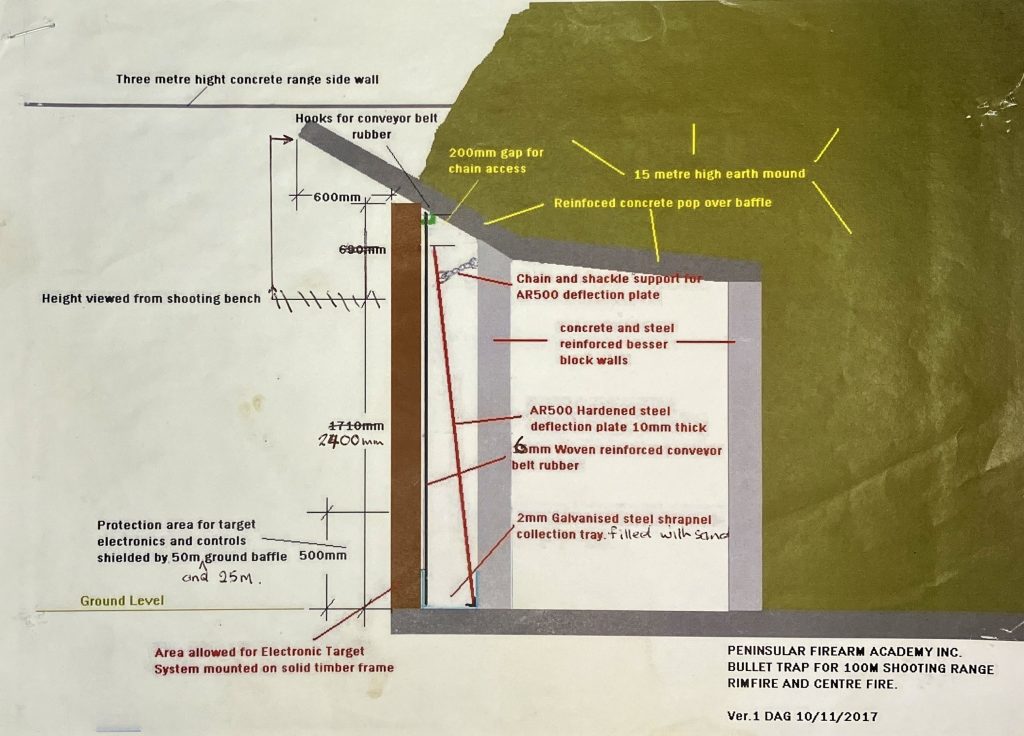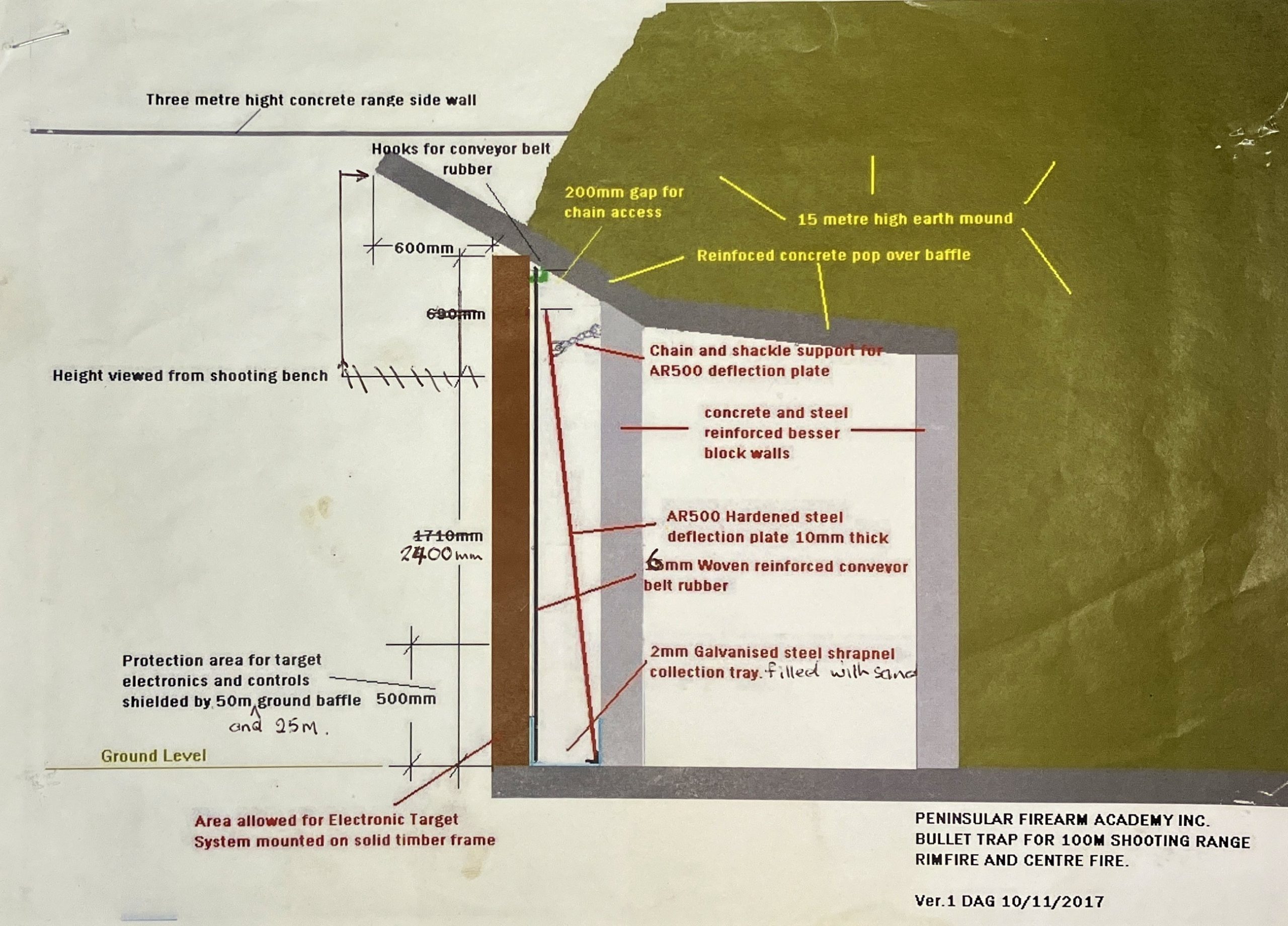Target Construction and what happens to your projectile at 100m
What Happens to your projectile at 100m
This video will give you an idea of what happens to your projectile when it hits the backing or sacrificial plates at the 100m targets. The steel in the video is softer than what we have at PFA which is military grade armour plate called HH500. The shattering bullet hit effect is the same, but our plates can take a lot more hits before they start to show deep indentations. Also our plates are sloping down as shown in the construction drawings below, and this causes the shrapnel to be projected into the sand tray below and the conveyor belt rubber on top of the sand tray. All the shrapnel is contained in the bullet trap housing to prevent pollution. In armor plating, the impact of a projectile can cause spalling, where small fragments, of metal break away. Of course we don’t allow incendiary projectiles like some of the ones shown in the clip, on our range.

This is the actual construction drawing (last update 2025) of the completed 100m Bullet Trap designed and built by Tony Garland that shows the versatility of the backing plates and the sacrificial tiles that are used in the targets. By inverting the backing plate it offers a new impact area or by reversing the backing plate because of buckling the backing plate may be used three or four times. The life of the large backing plate is extended by having a sacrificial bolt-on tile in the target centre area that is inspected every 3 months and replaced if it has been penetrated through.

This is the original concept drawing that was used in 2017 as a guide prior to the actual building of the targets which wasn’t until 2019. A number of changes were made such as armour plate thickness and design, sand trap design, and target protection. More changes and modifications may happen as we find different ways of prolonging the life of various components as we progress into the future.

